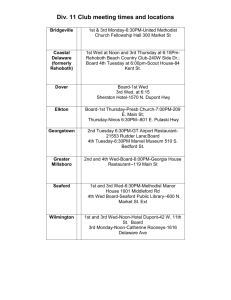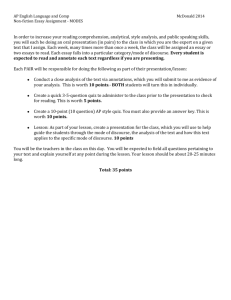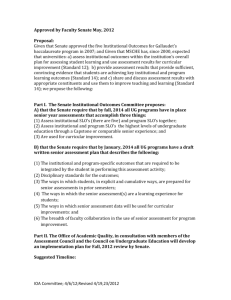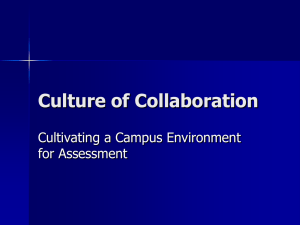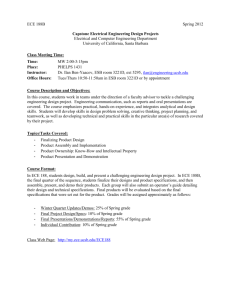jan 09 2013 sbc synopsis - Purdue University Calumet
advertisement
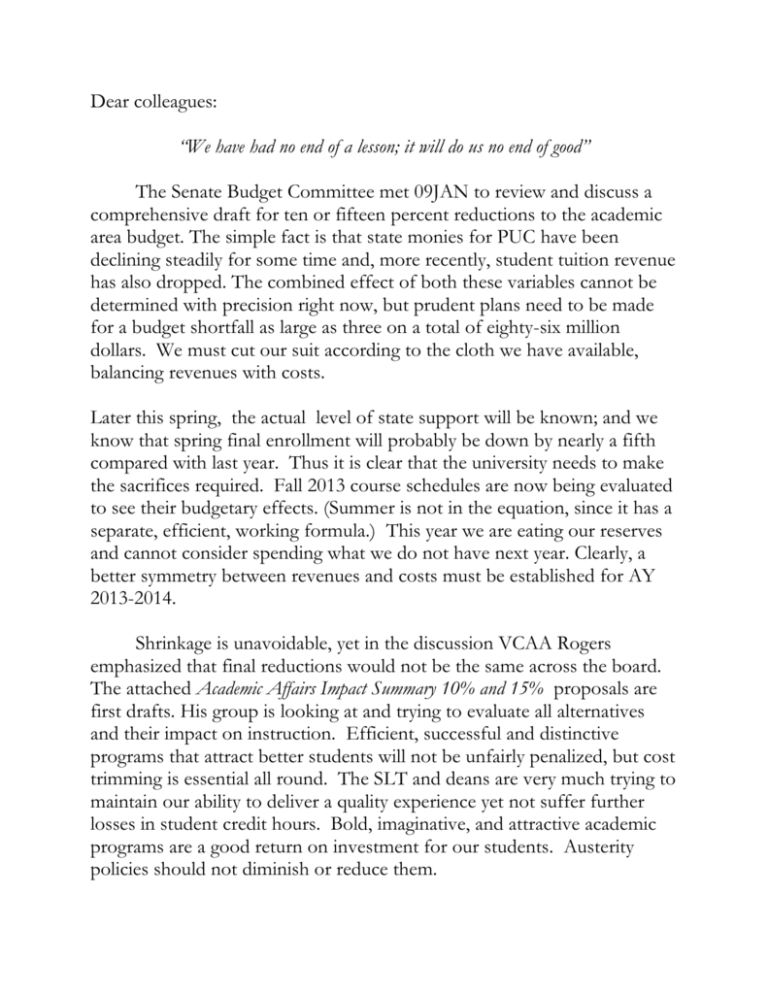
Dear colleagues: “We have had no end of a lesson; it will do us no end of good” The Senate Budget Committee met 09JAN to review and discuss a comprehensive draft for ten or fifteen percent reductions to the academic area budget. The simple fact is that state monies for PUC have been declining steadily for some time and, more recently, student tuition revenue has also dropped. The combined effect of both these variables cannot be determined with precision right now, but prudent plans need to be made for a budget shortfall as large as three on a total of eighty-six million dollars. We must cut our suit according to the cloth we have available, balancing revenues with costs. Later this spring, the actual level of state support will be known; and we know that spring final enrollment will probably be down by nearly a fifth compared with last year. Thus it is clear that the university needs to make the sacrifices required. Fall 2013 course schedules are now being evaluated to see their budgetary effects. (Summer is not in the equation, since it has a separate, efficient, working formula.) This year we are eating our reserves and cannot consider spending what we do not have next year. Clearly, a better symmetry between revenues and costs must be established for AY 2013-2014. Shrinkage is unavoidable, yet in the discussion VCAA Rogers emphasized that final reductions would not be the same across the board. The attached Academic Affairs Impact Summary 10% and 15% proposals are first drafts. His group is looking at and trying to evaluate all alternatives and their impact on instruction. Efficient, successful and distinctive programs that attract better students will not be unfairly penalized, but cost trimming is essential all round. The SLT and deans are very much trying to maintain our ability to deliver a quality experience yet not suffer further losses in student credit hours. Bold, imaginative, and attractive academic programs are a good return on investment for our students. Austerity policies should not diminish or reduce them. All agreed upon the need for efficiencies. It was suggested, however, that if the average class size were to increase by two students, we would be in the clear. Also, it was proposed that a 50% increase in foreign students would abolish a shortfall. The lasting benefits of trimming fat and rebalancing were stressed. The conversation around the table recognized that the fall semester deadline requires realistic possible outcomes to be readied now. In short, this is the first step in a dynamic and open process that is crucial to the future of the university. Falling revenues have the healthy side effect of forcing us to think creatively about how to get the best value from our suddenly limited resources. Please convey your views directly to your department senate representative or your school budget committee representative: MARK ARCIAGA AMLAN MITRA BETH VOTTERO CHANDRA SEKHAR COLIN FEWER GEOFF SCHULTZ WEI-TSYI EVERT TING SHOMIR SIL CASIMIR BARCZYK Student Government. School of Management School of Nursing School of Technology School of Liberal Arts and Sciences School of Education School of Engineering, Math and Science Member at large Liaison with Faculty Affairs Committee SPRING 2013 Senate Budget Committee Meeting Schedule WED FEBRUARY 20 WED MARCH 20 WED APRIL 17 ALL MTGS IN CIVS 109 3:30PM Cordially, Geoffrey Member at large & elected chair
